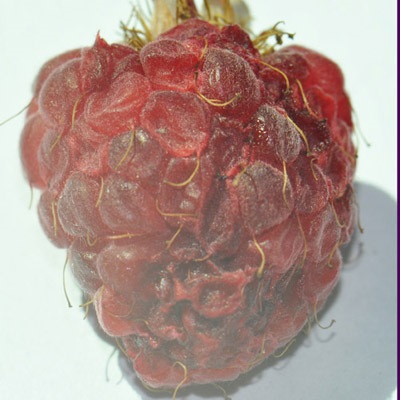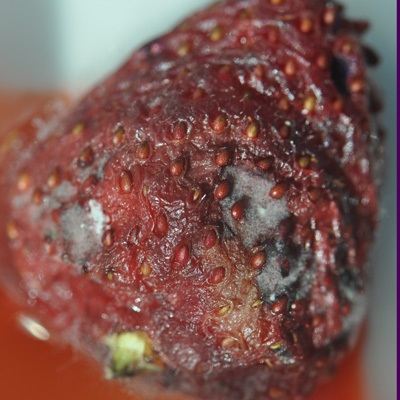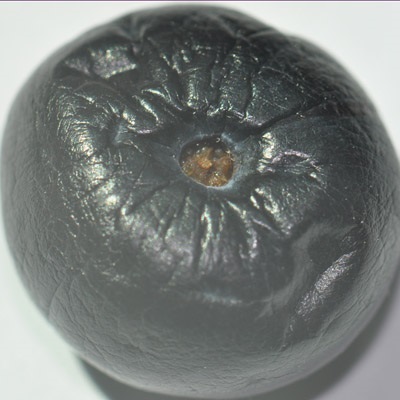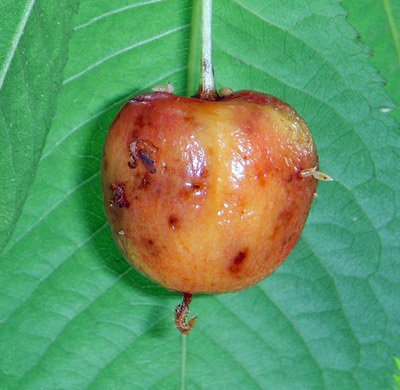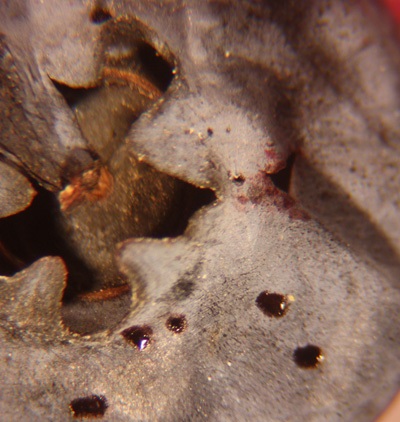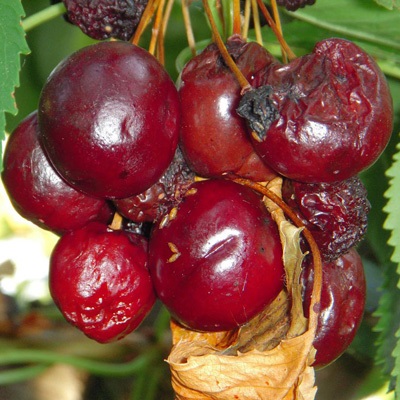Spotted wing drosophila damage to fruit
Learn how to recognize the damage caused by spotted wing drosophila in soft-skinned fruit.
Introduction
While it is not possible to distinguish SWD larvae from those of other common vinegar flies, the presence of larvae in intact fruit prior to harvest should be viewed as suspicious. Signs of infestation by SWD may be confused with normal aging of mature fruit. Most uninfested ripe fruit will show mild overall softening after several days.
Recognizing fruit damage
When fruit has been attacked by SWD, early mould, wrinkling and softening can be seen at 2-3 days following egg-laying, and most fruit show obvious damage after 3–4 days (Figure 7, 8, 9).
Pin-prick sized scars or holes (Figure 10) from which sap exudes may also be evident.
Small holes created by larvae for breathing may also been seen, sometimes with larval breathing tubes visible (Figure 11).
Eventually, fruit softens in spots and the skin collapses, with a wrinkled appearance that becomes very obvious after about 5 days. Fruit left hanging following harvest may show signs of heavy infestation (Figure 12).
